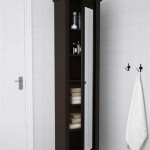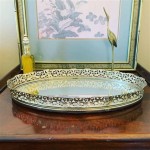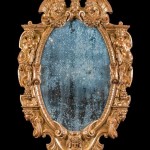Does Mirror Box Therapy Work?
Mirror box therapy is a non-invasive treatment that uses a visual illusion to provide relief from phantom limb pain. The therapy involves placing a mirror vertically between the patient's two hands, with the affected limb hidden from view. The patient then moves the intact limb, and the reflection of the movement is perceived as movement of the phantom limb. This visual feedback is thought to help the brain "relearn" the missing limb's position and movement, thereby reducing phantom limb pain.
Mirror box therapy has been used to treat a variety of conditions, including phantom limb pain, chronic pain, and stroke rehabilitation. It is a relatively new treatment, but research has shown that it can be effective in reducing pain and improving function in some patients. However, the effectiveness of mirror box therapy varies from person to person, and more research is needed to determine its long-term benefits and potential side effects.
How Mirror Box Therapy Works
The exact mechanism by which mirror box therapy works is not fully understood, but several theories have been proposed. One theory suggests that the visual feedback from the mirror helps to "trick" the brain into believing that the phantom limb is actually present. This illusion can help to reduce pain by providing a more realistic representation of the body's current state. Another theory suggests that mirror box therapy works by stimulating the brain areas responsible for motor control and proprioception, which is the sense of body position and movement. This stimulation can help to improve the brain's ability to process information about the body, which can lead to a reduction in pain.
Benefits of Mirror Box Therapy
Mirror box therapy has been shown to provide a number of benefits for patients with phantom limb pain and other conditions. These benefits include:
- Reduced pain intensity
- Improved functional movement
- Increased range of motion
- Improved quality of life
In addition to these benefits, mirror box therapy is a non-invasive treatment that is generally safe and well-tolerated. It is also relatively inexpensive and can be used at home with proper supervision.
Potential Side Effects of Mirror Box Therapy
While mirror box therapy is generally safe, there are some potential side effects. These side effects are typically mild and include:
- Dizziness
- Headache
- Nausea
- Increased pain
If you experience any of these side effects, it is important to stop using the mirror box and contact your doctor. It is also important to note that mirror box therapy is not a cure for phantom limb pain or other conditions. It is a treatment that can help to reduce pain and improve function, but it may not be effective for everyone.
Who is Mirror Box Therapy for?
Mirror box therapy may be a good option for individuals with phantom limb pain, chronic pain, and stroke rehabilitation. However, it is important to consult with a physician or physical therapist to determine if it is appropriate for your specific condition. They can assess your needs and recommend the best course of treatment.
It is worth noting that while mirror box therapy has shown promise in treating these conditions, more research is needed to determine its long-term effectiveness and potential side effects. It is also important to remember that mirror box therapy is not a substitute for other treatments, but rather a complementary therapy that can be used alongside conventional treatments.

Fooling The Brain Pain Role Of Mirror Therapy And Modern Uses In Virtual Reality Frontiers For Young Minds
Mirror Therapy For Chronic Pain The Hand Society

Graded Motor Imagery Mirror Therapy Explanation And Steps

Mirror Therapy Exercises For Stroke Recovery

Mirror Therapy For Stroke Hemiplegia And Phantom Limb Pain Homeceuconnection

Saebo Mirror Box Therapy Arm And Hand Function

Mirror Therapy For Stroke Patients How To Improve Mobility

Stroke Exercises Using Mirror Therapy And Neurons

Mirror Therapy Amputee Coalition

John Colapinto Ramachandran S Mirror Trick The New Yorker








